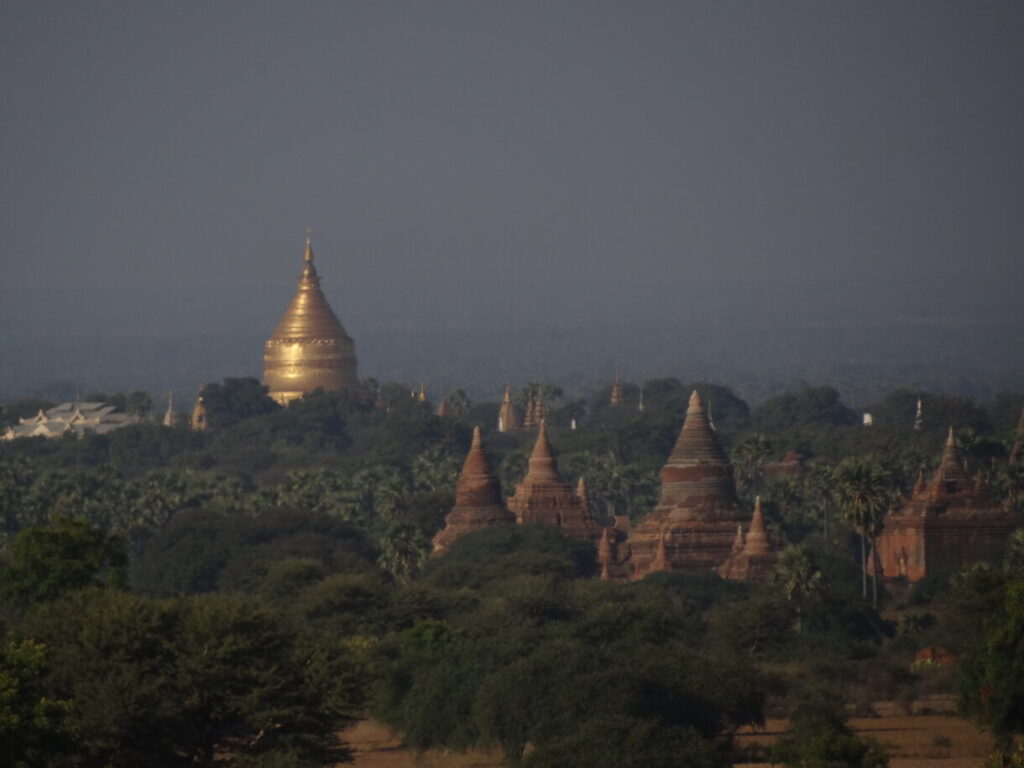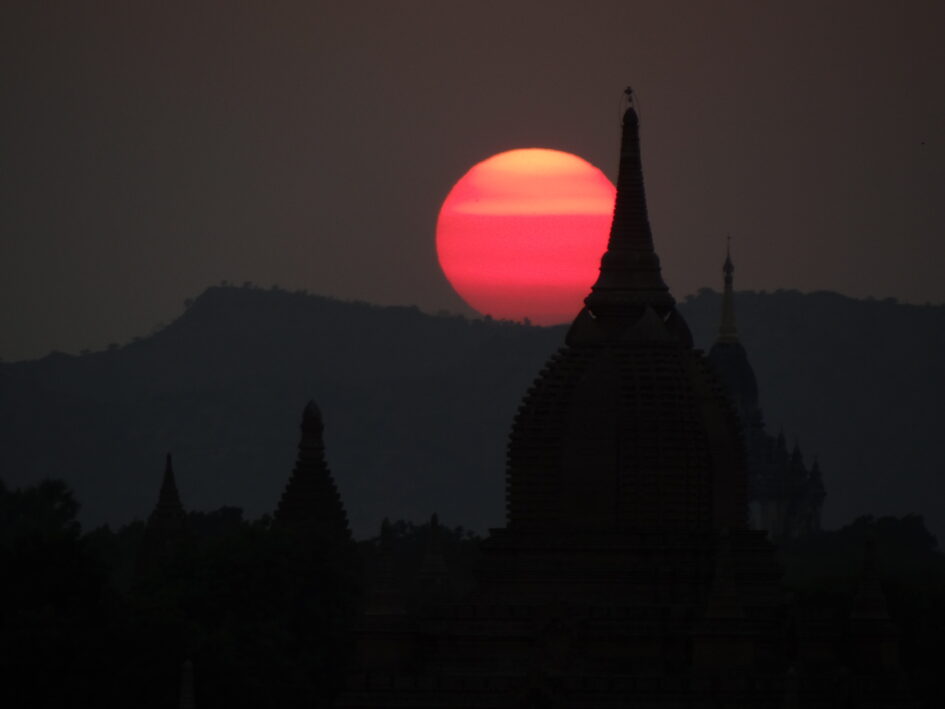I arrive in Bagan by bus at dawn. After a quick breakfast, I begin my search for accommodation—unfortunately, most guesthouses, hotels, and hostels are already full or reserved. After a long search, I manage to book a bed at Winner Guesthouse for $8, but only starting the next day. What to do for the night? Local hospitality comes to the rescue—monks allow me to spend the night in one of the monasteries. It’s an extraordinary experience, letting you feel the authentic atmosphere of Bagan and understand the important role Buddhist monasteries play in the community’s daily life.

Bagan is truly the jewel of Myanmar and one of the most important archaeological sites in Southeast Asia. The city was the capital of the first unified Burmese kingdom from 1044 to 1287. At its peak, over 10,000 temples, pagodas, and monasteries were built here—more than 2,000 of which still stand today, scattered across more than 60 km². I rent a bicycle and set out to explore, passing both monumental temples and humble, abandoned stupas—each with its own story and legend.
Bagan enchants not only with its architecture but also with its atmosphere. Far from the hustle and bustle of the city, you can relax, meditate, or simply admire the stunning landscapes. At sunrise and sunset, the temples are bathed in golden light, creating a view that lingers in your memory. This place attracts both tourists and pilgrims, while locals proudly maintain their traditions—you’ll see monks collecting alms and children learning in monastic schools every day.

Interestingly, Bagan was for centuries a center for the development of Burmese script and literature, and a hub for the spread of Theravada Buddhism. Today, it’s a UNESCO World Heritage Site, and temples like Ananda, Dhammayangyi, and Shwezigon amaze with their craftsmanship and ornate decoration. Most travelers stay here for 2–3 days, but some linger for two weeks or more to fully soak in the magic of this place.

Leave a Reply